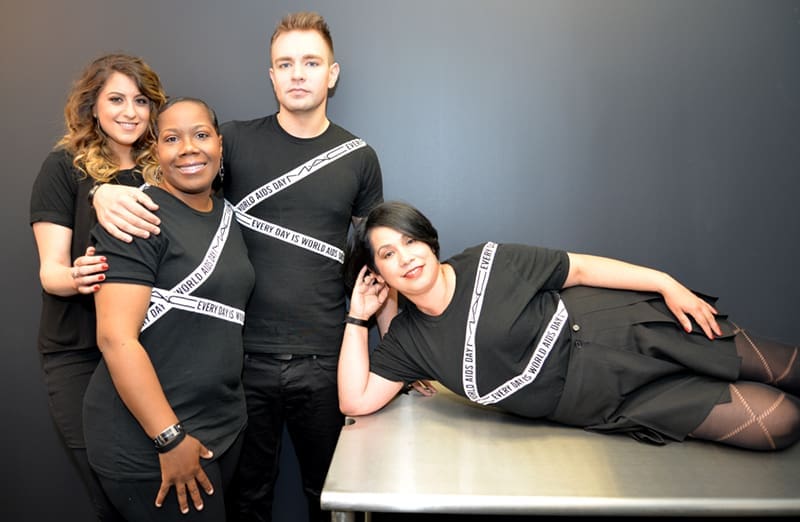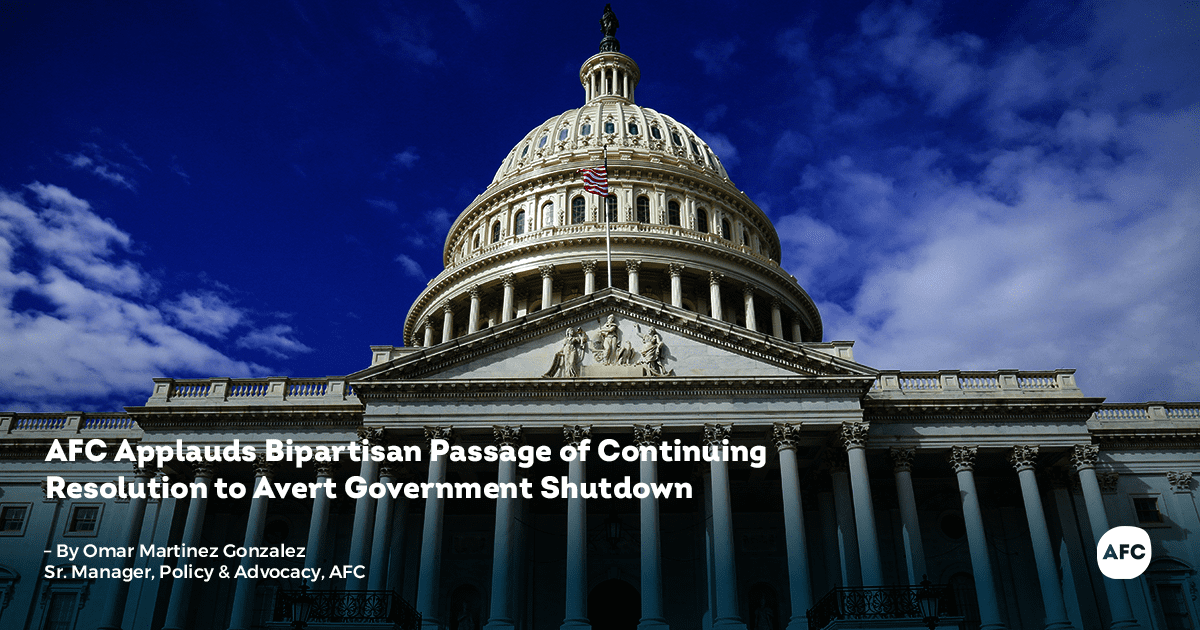|
|
| Kenneth (at left) is HIV tested by Mike Jasper, of M.A.D.E. (at right). AFC Photo-Ed Negron |
On the day before Thanksgiving, a 22-year-old African-American man named Kenneth leaned back in his chair, waiting to find out if he was HIV-positive.
It was quiet at the typically bustling Family Community Resource Center (FCRC) in Englewood— only about 100 people idled, listening for their names to be called for food and utilities assistance. A single line of 20 people or so stemmed from the counter. The rest waited in chairs in the pale light of the reception area, many of them fidgeting with cell phones or corralling small children.
Kenneth had tagged along with his girlfriend, who was seeking services, and was approached by an outreach worker asking if he wanted to be tested for HIV. Kenneth said yes. Soft-spoken, with his hair in small dreadlocks, the Kennedy-King College student said he liked to get tested every six months or so. And it was convenient to do so right here at the FCRC.
“It should be something that everyone should knows about,” said Kenneth, a South Side resident, declining to give his last name. “It’s very important. A lot of people need to get tested but they might not have the proper backup, if you know what I’m saying.”
Thanks to the Bridge Project — a public-private collaborative of the AIDS Foundation of Chicago (AFC), the state Department of Human Services , and Gilead Sciences, Inc. — some of the South Side’s most at-risk neighborhoods have their backup. The unique program offers HIV testing in non-clinical locations in hard-hit neighborhoods, namely FCRC offices. The idea is to provide the convenience of the “one-stop shop,” to make HIV tests readily available as people wait for other public assistance benefits.
Since the Bridge Project began in earnest in May 2011, more than 3,445 have been tested for HIV. So far, 21 people have tested positive, and about half of them have been linked to care. Those numbers exceed the “scopes” for the fledgling initiative; 3,000 tests and 18 positive diagnoses were projected.
The Bridge Project has set up shop in three FCRCs, all of which are intended to serve the South Side neighborhoods with high levels of HIV/STI, poverty, crime, unemployment and substance abuse. The three sites collectively cover West Englewood, Englewood, Auburn Gresham, Chatham, Avalon Park, South Shore, Washington Park, Greater Grand Crossing and Woodlawn.
For context, there are about 30,000 people infected with HIV in Chicago, according to an AIDS Foundation of Chicago projection that includes takes undiagnosed and unreported cases into consideration. More than half of them are African-American.
In the heavily African-American neighborhoods of Englewood, West Englewood and Auburn Gresham — the three communities covered by the Englewood FCRC — the average HIV infection rate is higher than the Chicago rate and more than double the national average.
Opening the Windows
Baldheaded, wearing a crisp pink button-down shirt, Eddie Eagle stood by a table near the front doors with his arms folded across his chest, his eyes scanning the room. Beside a small sign, reading “Say Yes to the Test,” and various pamphlets and brochures about HIV/AIDS and sexual health, were little plastic baggies filled with condoms and candy.
“People are here sometimes for a couple of hours,” said Eagle, executive director of the nonprofit, Making a Daily Effort (M.A.D.E.). “A little piece of candy can open the door to a conversation. … Everyone has something they want to talk about and you have a window to find out what that is.”
Three nonprofits — M.A.D.E., Beyond Care, Inc., and Brothers Health Collective — are in partnership to do the boots-on-the-ground work: testing, outreach and linking to care. AIDS Foundation of Chicago coordinates and evaluates the project.
As Eagle talked, a Hispanic woman with two small children approached and, smiling, asked if she could have a bag of the candy.
 |
| Oral swab HIV tests are used for the Bridge Project. AFC-Ed Negron |
It’s all part of the strategy at the Englewood FCRC, which has conducted more than 1,500 tests since May 2011. Parents grab the candy for their kids, the condoms for themselves. Then Eagle and his fellow volunteers have their opening for a conversation about HIV testing.
More than anything, it’s about consistency and building relationships, Eagle said. And the sheer convenience and ease of the test are selling points, too. The test is free, confidential and takes only 20 minutes. No blood is drawn — it’s just an oral swab that takes a matter of seconds.
On a good day, Eagle and his small band of outreach workers test about 40 people. On a slow day, it’s more like 20. In each of the Bridge Project/FCRC sites, trained and certified testers/counselors provide services two days a week.
Connected to the large waiting area is a small room where, on the day before Thanksgiving, outreach workers Mike Jasper, of Bronzeville, and Ron James, of Englewood, conducted the oral swab tests.
“You would be surprised by how many people are scared to do it but when they see other people like this young brother right here get up and do it, they want to get tested, too,” Jasper said, as he tested a stylishly-dressed man in his late 20s.
As Jasper ran through the risk assessment with the man, a DHS worker stuck her head into the room and asked if she could have some condoms. The moment captured another important piece of the Bridge Project’s success so far: building relationships with the FCRC staff.
“Go ahead, sweetheart, they’re by the front door,” Jasper said.
Between tests, James went out and worked the crowd, finding new people willing to be tested. A burly man, he cut an imposing figure in the room, but his approach was friendly and earnest. James, who has an HIV-positive brother, has a personal stake in the work.
“I’ve always just wanted to help people. It feels like we’re making a big difference,” James said. “If it wasn’t for us here, they probably never would get tested.”

Ron James, of M.A.D.E., (at center in green shirt) works to recruit new people to be tested for HIV. AFC Photo-Ed Negron
Linking to Care
Keeping up with the demands of the Bridge Project’s success has been a challenge.
“We’ve had fantastic outcomes,” said Cynthia Tucker, AFC’s director of prevention and community partnerships. “We surpassed our scopes in six months and have figured out how to shuffle a lot of moving pieces.”
The project, funded by the pharmaceutical company Gilead, was allotted money for 3,000 tests. But since that mark has been exceeded, the project partners have had to get creative to pay for more test kits, Tucker said.
The cost of the tests, ranging up to $18.75 a piece, are one challenge of meeting the need that’s been revealed by the Bridge Project, she said. When talking about testing thousands of people, it adds up quickly. It remains to be seen how the scopes of the projects might be changed for the second year of the project, which begins in February 2012.
Another item for the lesson learned list: There needs to be a comprehensive strategy for linking HIV-positive people to care.
“When testing in non-clinical settings, you have to make sure individuals are linked to care,” Tucker said.
About 50 percent of those tested through the Bridge Project are new testers, she said. But some who have been tested know their status already. And a few knew they’re HIV-positive but were struggling to accept their diagnoses.
“They see us there on a daily basis and they think maybe we can help,” she said.
That consistency of presence is crucial to the project’s success and a critical strategy to fighting HIV/AIDS in inner-city communities, said Celeste Watkins-Hayes, sociology professor and chair of the Department of African American Studies at Northwestern University.
When AIDS organizations partner with less conventional partners — public aid offices, churches, salons and barbershops — it can be very effective at eroding stigma in inner-city communities, she said.
“Part of what the Bridge Project is doing is putting the same workers in the same organizations,” Watkins-Hayes said in an email, “so residents develop trust and relationships with the outreach workers in ways that likely make them more comfortable with being tested and asking questions about HIV prevention and treatment.”
Watkins-Hayes is also the primary researcher for the Heath, Hardship and Renewal Study, which explores economic strategies for helping women living with HIV.
“As government resources for social and medical services become scarcer, health organizations in inner-city communities must become savvier in their response to the HIV crisis by seizing opportunities to develop creative partnerships that reach as many people as possible in these neighborhoods,” she said.
 |
| Ron James, of M.A.D.E., (at left) talks to a woman about her HIV test. AFC Photo-Ed Negron |
In year two, the Bridge Project aims to become savvier in linking people to care.
For some people, linking to care might be as easy as giving them a phone number to call. Others need an immediate ride to the hospital for linkage to care. There are many different ways to link someone to care and it’s important for the outreach workers to be trained in all of them, Tucker said.
“We have a flowchart of how it’s supposed to go, but it can be more difficult when it’s urgent,” she said. “It’s all about meeting people where they are.”
The Bridge Project is one of about 40 “HIV FOCUS” programs throughout the country funded by Gilead. The initiatives seek to discover and implement best practices in HIV prevention and linkage to care, a Gilead spokeswoman said. Gilead explores partnerships that could prove to be sustainable in the long-term.
“We’ve been successful, but there’s still a lot left to do,” Tucker said. “I hope we have this program for a long while.”
Gregory Trotter can be reached at [email protected]




